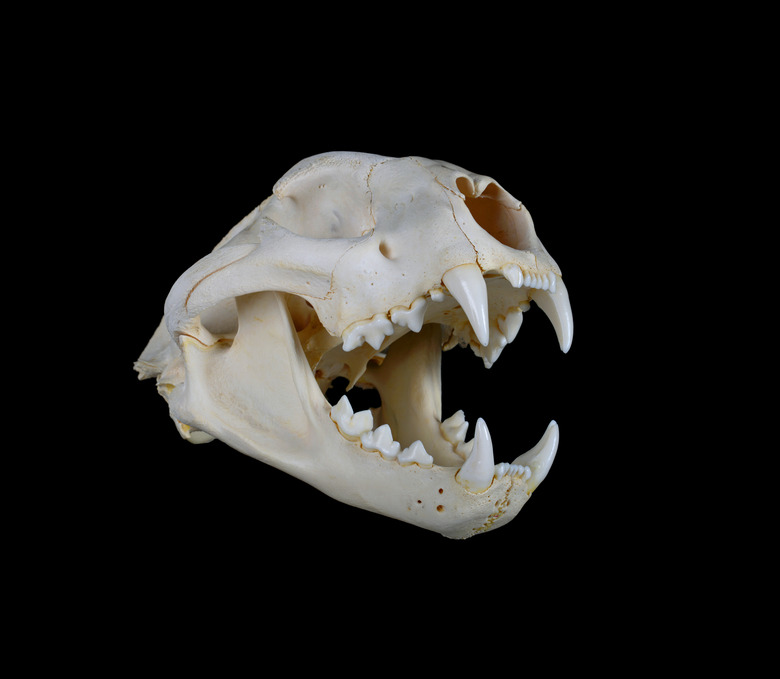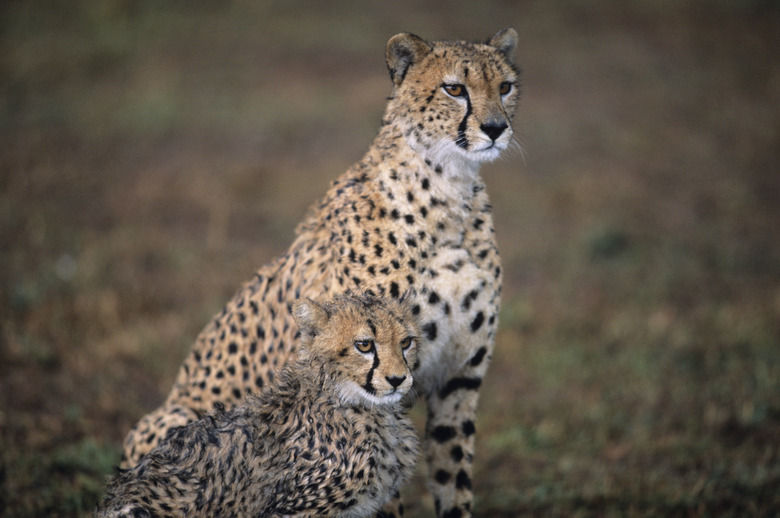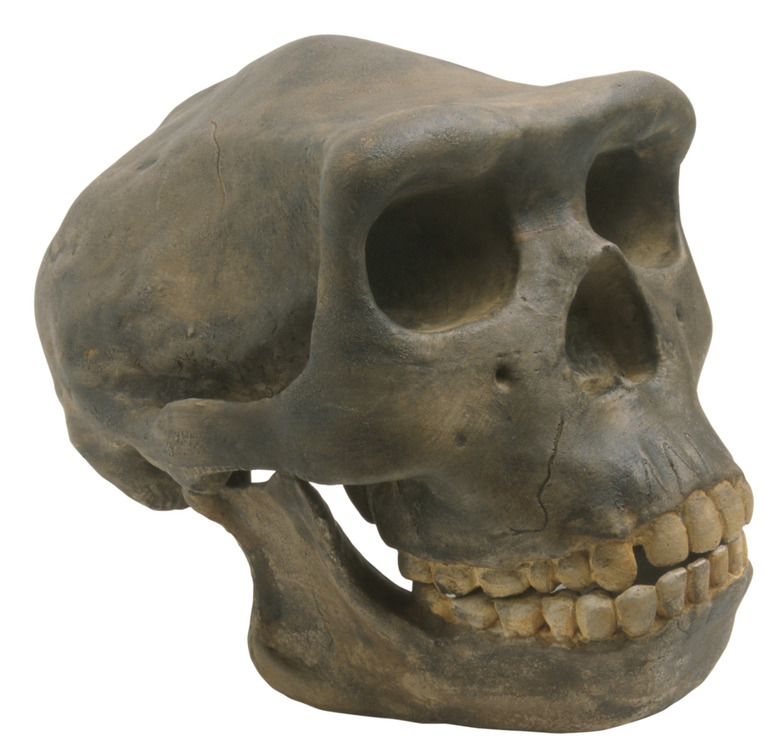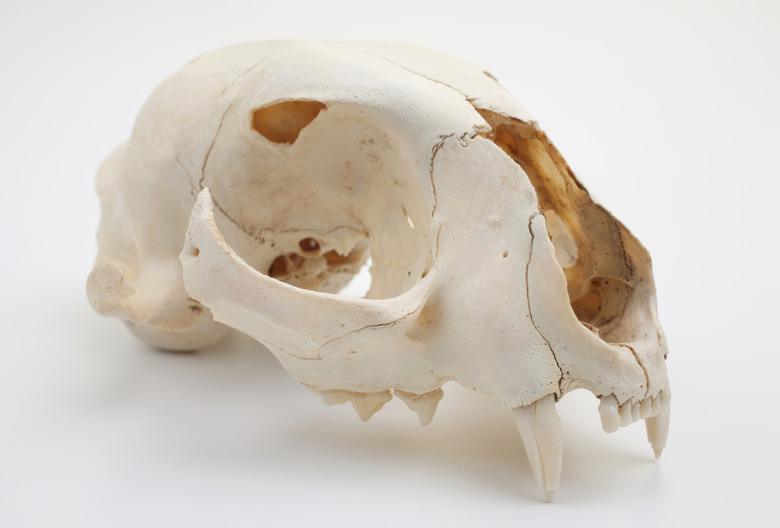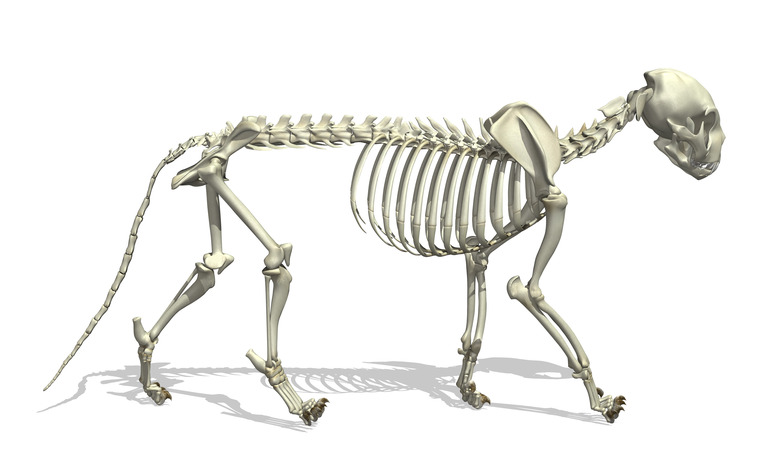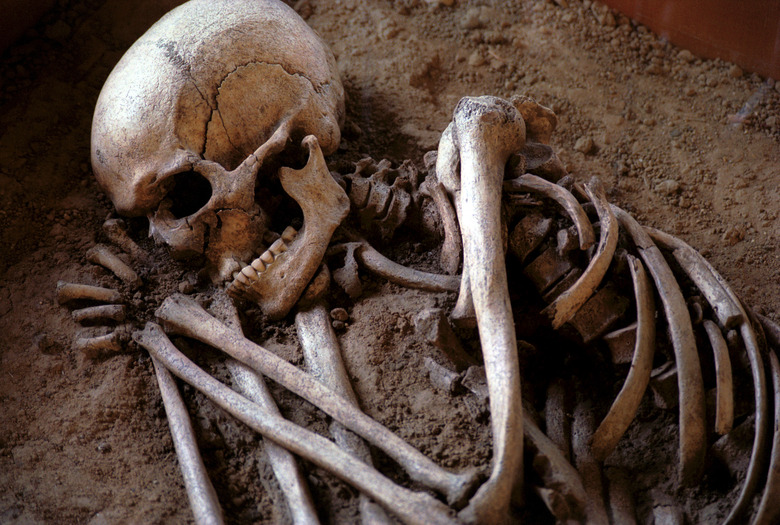Comparison Of A Human & Cat Skeleton
At first glance, it might look as if there are few similarities between a human's and a cat's skeleton. A cat, as his or her owner will attest, can slink through tight holes and as a species felines seem comfortable curled up in boxes for hours, a feat of posture that would leave a human with a thoroughly sore back. They also have a long and occasionally sordid history in human myth and folklore, which adds to the perception that they are inhuman, yet graceful, hunters. However, when you look a little deeper, you find many similarities in shape, structure and function.
TL;DR (Too Long; Didn't Read)
Cat skeletons have evolved to be flexible, and contribute to quick bursts of speed, while human skeletons thrive on size and stability. However, the mammals have similarities that are more than skin deep.
Hunters and Hunted
Hunters and Hunted
Evolution has shaped the cat as a hunter and predator. Everything about a cat has been formed to shape a lithe, agile fighting animal. In contrast, the skeletons of humans have formed to provide strength and stability.
Skulls and Spines
Skulls and Spines
There are, however, similarities between the skeletons of modern-day domestic cats and humans. Like nearly every land mammal, both cats and humans have a well-formed skull and jaw, seven cervical vertebrae, a vertebral column and four appendages.
Size and Shape
Size and Shape
The most obvious difference between a cat and human skeleton is the size. At nearly 20 to 25 times the size of the average domestic cat, a human is far larger and more powerful. Humans are built as a biped, meaning that they walk on two legs. Therefore, their hips and backbone are shaped much differently and are much more solid than those of the quadruped feline.
Big and Bendy
Big and Bendy
Although humans are much larger, a cat has roughly 250 bones in its skeleton, compared to the 206 bones of the human skeleton. The extra bones in the cat's skeleton are found mainly in the backbone, which gives the cat its extra flexibility and agility. A cat has 52 or 53 vertebrae; humans have 32 to 34. These extra bones are spaced out and have more padding, giving the cat flexibility and the ability to twist, turn and spring. Humans have collarbones, while cats do not. However, cats do have a free-floating set of bones in their shoulders that allow them to worm into any space into which they can fit their head.
Form and Function
Form and Function
In both cats and humans, the skeleton provides the same basic set of functions. Because of the density and hardness of bone, the skeleton builds the rigid framework to which other body systems attach. The basic shape of a body is determined by the skeleton. The skeleton also serves as protection for vital organs, such as the brain, heart and lungs. Because of the structure of the skeleton, it is the basis of all movement. Functioning as an attachment point for all muscles, the skeleton serves as a series of levers to push and pull the body into place. Far from being a dead organism, the skeleton houses a production power-house. Human bone marrow produces an average of 2.6 million red blood cells a second, and forms the basis of the immune system. The skeleton of both cats and humans acts as a storage facility for minerals, such as calcium and phosphate.
Cite This Article
MLA
Grace, Kea. "Comparison Of A Human & Cat Skeleton" sciencing.com, https://www.sciencing.com/comparison-human-cat-skeleton-6495829/. 23 April 2018.
APA
Grace, Kea. (2018, April 23). Comparison Of A Human & Cat Skeleton. sciencing.com. Retrieved from https://www.sciencing.com/comparison-human-cat-skeleton-6495829/
Chicago
Grace, Kea. Comparison Of A Human & Cat Skeleton last modified March 24, 2022. https://www.sciencing.com/comparison-human-cat-skeleton-6495829/
